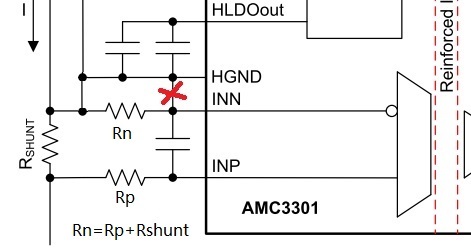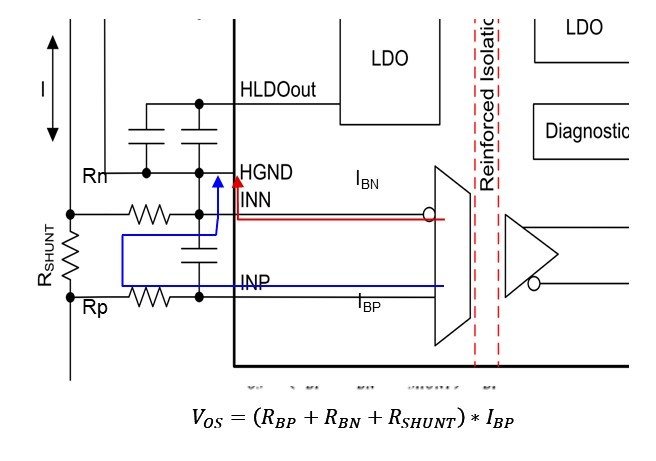Other Parts Discussed in Thread: AMC1311, AMC1301
Hi team,
I noted this device has very high input bias current, the max bias current is as high as 41uA! Considering this high bias current, our recommended typical design will have very high offset error due to unbalanced INP/INN resistance (see below picture). Provided we use a pair of 100 ohm for Rp and Rn for filtering/protection purpose, this design will introduce up to 8mV input offset error! I think maybe the typical design in datasheet has a typo or connection error. Should we change the design as below?
Thank you!
John



